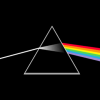While "Tsuba: An aesthetic study" is a good reference book and guide to tsuba appreciation, in my opinion, it's main short coming is that at times it tends to categorizes tsuba with general definitions that appear to be subjectively derived. I think some well documented schools (Asakusa for example) can be studied in this way, however with earlier items this can make things confusing as the question arises as to what the author is basing the definitions on. One good example is what is "soft" iron? A distinction between soft and hard is mention throughout the treaties but it is left to the reader to deduce what that actually is (if I recall correctly). Like I said a good book but I would use it as a general reference and a source of food-for-thought, but not the final word.
Regarding the tsuba in question, as for me, the jury is out. The new photos are different compared to the others and shine it in a different light. I have said my piece and wait for others to chime in. The only thing is that I would reiterate, as mentioned above, is that there seems to be too much going on at once for it to be "old" in my honest opinion.


